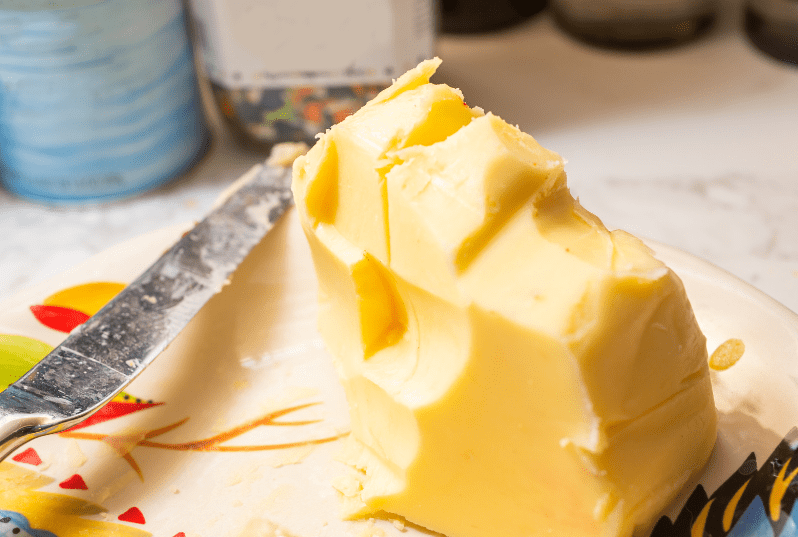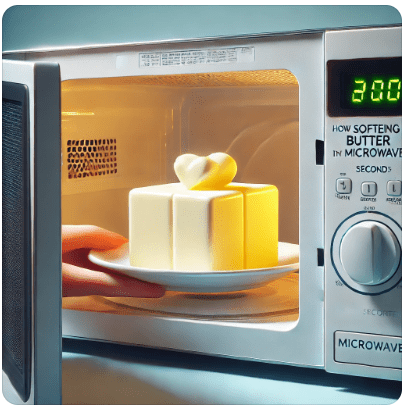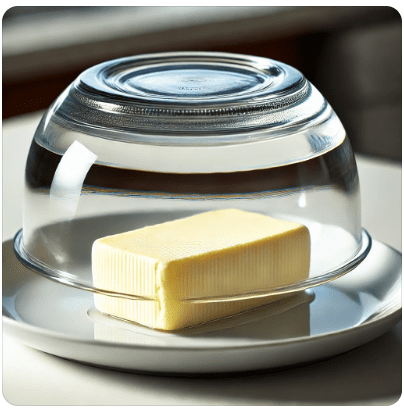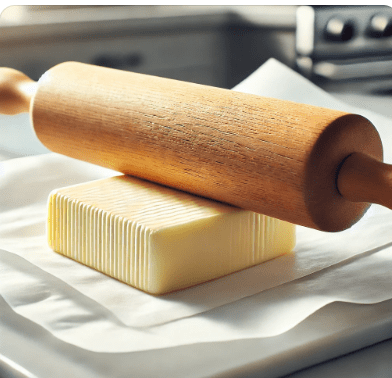
If you’ve ever pulled out a rock-hard stick of butter when a recipe calls for softened butter, you’re not alone! Many baking recipes require soft butter to ensure the perfect texture for your baked goods.
But fear not, there are a few quick tricks to prepare your butter for action in no time. Whether baking cookies, cakes, or anything in between, softened butter is critical for trapping air and ensuring a fluffy, light result.
Let’s dive into some foolproof methods to soften butter quickly without melting it into a greasy mess.
Why Does Softened Butter Matter?
Table of Contents
ToggleBefore we jump into the how, it’s essential to understand the why. Softened butter creates air bubbles when whipped or creamed with sugar, crucial for the rise in baked goods. When butter is at room temperature, it mixes easily with other ingredients, ensuring a smooth, well-incorporated batter or dough.
Using cold butter straight from the fridge won’t give you that fluffy texture you need for specific baking recipes. Instead, you’ll end up with lumpy batter and baked goods that may turn out dense.
What Exactly Is Softened Butter?
When a recipe calls for softened butter, it doesn’t mean melted butter. Soft butter has been left at room temperature long enough to become pliable but still firm. You should be able to press a finger into the butter easily, but it should still hold its shape. Think of it like the perfect mix between cold and melted butter.
Quick Methods to Soften Butter
Here’s the part you’re here for: how to soften butter quickly when you’re in a pinch. Below are a few of the best tricks to prepare butter for baking without sacrificing texture.
1. The Microwave Method

One of the quickest ways to soften butter is by using the microwave, but it requires a bit of finesse.
- Step 1: Place the stick of butter on a microwave-safe plate.
- Step 2: Set the microwave to a low power setting (about 30% to 50% power).
- Step 3: Heat the butter in 5-second intervals. After each interval, give it a quick press to see if it’s soft but not melted.
- Step 4: Once it’s pliable but still holds its shape, it’s ready to use.
Be careful! If you leave it in for too long, you’ll end up with melted butter, which isn’t ideal for most recipes calling for room-temperature butter.
2. The Warm Water Method

This is an excellent method to avoid the risk of melting butter in the microwave.
- Step 1: Boil a couple of cups of water and pour it into a large measuring cup or bowl.
- Step 2: Let the water sit for a minute, then pour it out.
- Step 3: Quickly place your stick of butter under the warm, inverted bowl or cup. The heat will gently soften the butter in about 10–15 minutes.
3. The Grating Method

For a foolproof way to soften butter quickly, consider grating it.
- Step 1: Use a cheese grater to shred your cold stick of butter into small pieces.
- Step 2: The smaller pieces will come to room temperature much faster than a whole stick. This method also helps evenly distribute the butter when mixing it into your dough.
4. The Rolling Pin Method

If you’re in a real hurry, grab a rolling pin for this following method.
- Step 1: Place the cold butter between two sheets of parchment or wax paper.
- Step 2: Use the rolling pin to gently roll the butter flat, spreading it into a thin layer.
- Step 3: As you roll, the butter will soften due to the pressure. In no time, it’ll be the perfect consistency for baking.
Common Mistakes When Softening Butter
1. Melting Butter
Did you accidentally end up with melted butter? Don’t worry, it happens. While it’s not ideal for recipes that require soft butter, melted butter is perfect for recipes like brownies or muffins, which won’t negatively impact the texture.
2. Over-Softening
If the butter becomes too soft or warm, it may not hold air when whipped, which is critical for certain baked goods. When butter becomes greasy, it won’t cream properly with sugar, and your cookies or cakes might come out flatter than expected.
How to Use Softened Butter in Baking
Once your butter is softened, you’re ready to bake! Here are some examples of where soft butter is necessary and how it affects your baked goods:
- Cookies: Softened butter helps create a perfect cookie dough texture that spreads evenly during baking. Cold butter can lead to thicker, uneven cookies.
- Cakes and Cupcakes: Room-temperature butter is key for a light and fluffy cake. It helps incorporate trapped air into the batter, resulting in a beautiful rise and soft crumb.
- Frosting: For silky smooth buttercream, you’ll need room-temperature butter. If the butter is too hard, you’ll end up with lumpy frosting; if it’s too soft, it won’t hold its shape.
FAQs
Q: How long can butter soften at room temperature take? A: It typically takes 30-60 minutes for a stick of butter to soften at room temperature, depending on how warm your kitchen is.
Q: Can I use melted butter in place of softened butter? A: It depends on the recipe. Some recipes, like brownies, call for melted butter, but others, like cookies and cakes, require soft butter to trap air and ensure the right texture.
Q: Can I leave butter out overnight to soften? A: While butter can be left out for short periods, it’s not recommended to leave it out overnight, especially in a warm kitchen, as it can spoil or become too soft.
Q: Can I soften butter by mixing it? A: Yes! You can cut cold butter into smaller cubes and beat it with a mixer to soften it. Just be careful not to overdo it, or the butter might begin to melt from the heat of the mixer.
Final Tips for Softening Butter
- Plan ahead: If you know you’ll be baking, take your butter out of the fridge well in advance to ensure it’s at the perfect consistency when you need it.
- Use a thermometer: If you’re unsure whether your butter is softened enough, you can use a kitchen thermometer. Ideally, softened butter should be around 65-67°F (18-19°C).
In the end, whether you soften butter in the microwave, with cups of water, or by grating it, you’ll be well on your way to creating delicious baked goods that are perfectly fluffy and flavorful. And remember, if you’re ever in doubt, a little patience and careful softening will always pay off in your final product.
Happy baking!


























